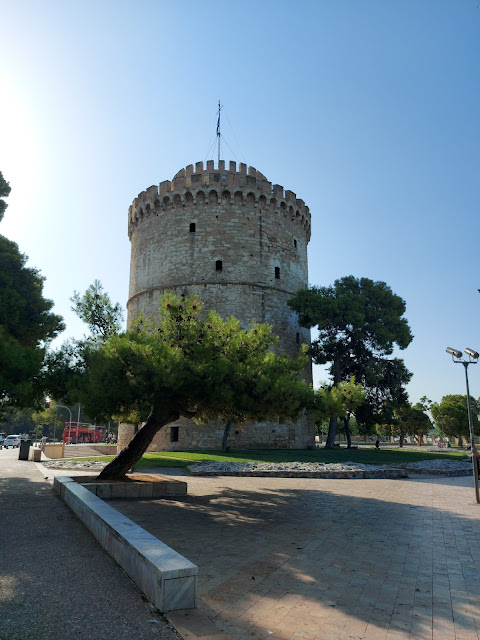 |
| Pella was the capital of the Kingdom of Macedon. |
 |
| Pella was also a rich trade hub on the Via Egnatia between Dyrrachium (Durres in Albania) and Thessalonika. |
 |
| The city was incredibly wealthy, and as it is unearthed, its clear styles in Pompeii were inspired by Pella. |
 |
| A lead weight with a bear eating on it |
 |
| Statues of the Macedonian version of Athena, with a three pronged helmet |
 |
| I don't think I would drink out of that. |
 |
| Part of a couch |
 |
| Gilded clay griffins attacking deer on a funerary couch |
 |
| The Goddess of the Underworld |
 |
| Iron Age goods from the region look similar to other parts of Europe. |
 |
| Gold burial masks with helmets from Archontiko, the Macedonian precursor to Pella |
 |
| A "heroic" set of grave goods |
 |
| Women were also buried with golden death masks. |
 |
| Reproductions of terracotta figurines that could be found around Pella in Macedonian times. |
 |
| Pella ruins are a short drive from the archeological museum in town. Only a small portion has been unearthed, but the ruin is still many city blocks. |
 |
| Bathtubs at the public bath |
 |
| Who knows what grand mosaics are still waiting to be unearthed? |



































